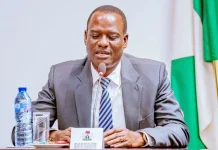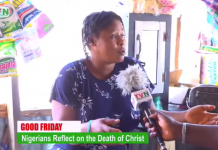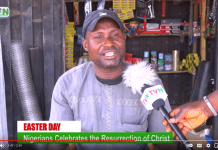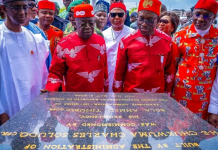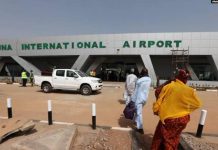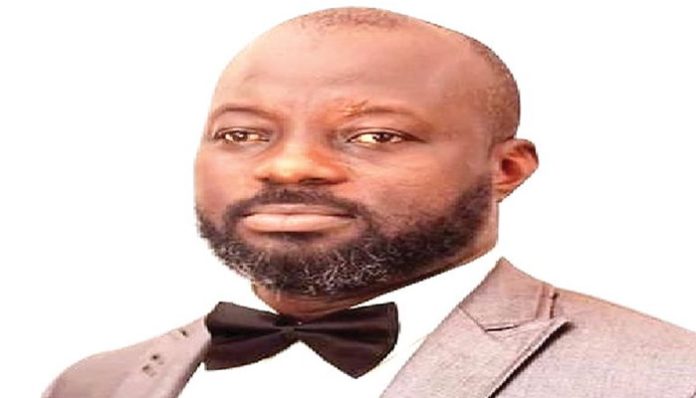

Special Adviser to the Lagos State Governor on Environment, Olakunle Rotimi-Akodu, speaks with VICTORIA EDEME about the strategies for addressing flooding and the cholera outbreak in the state
What strategies has the Lagos State Ministry of Environment implemented to address the issue of flooding during this rainy season?
As a state, the first strategy is an awareness campaign. Whatever you plan to do, the people must be involved. They shouldn’t be caught unawares. Previously, we sent out meteorological reports daily, but nobody paid attention. Now, we are taking a step further to explain what the reports mean and how to read and interpret them. Earlier this year, it was reported that precipitation would be slightly above average. For those living around the wetland areas of the state, which are prevalent, we have advised them to start moving. It’s a recurring event. Typically, every year they move when the floods arrive. Currently, the expected flood volume this year is unusual, making it potentially hazardous not to take notice. Therefore, we’re educating these residents that they shouldn’t wait for the usual cycle because there could be an unexpected surge. Additionally, we are making significant efforts to clear water paths, canals, and exit points that have often been blocked.
Furthermore, we plan to have a situation room so that if there’s rain and a flood, we can all coordinate across different areas and know what actions to take. Citizens would know how to protect themselves, the whereabouts of our personnel, and how to contact them in emergencies.
How effective is the awareness programme that is being carried out?
For the work we have done so far, we’re receiving good feedback. However, the target audience is not yet fully engaged. The elites, social agencies, and those on social media are responding well. The people most affected are those not inclined towards social media, and some are illiterate or semi-literate. Therefore, in addition to electronic communication, our teams are now actively going into communities. They visit all these wetlands to educate residents on what to do and how to avoid being caught unexpectedly in floods. Based on direct interactions, we are receiving positive feedback.
You mentioned that people have to switch locations when the floods are coming. Are there any plans to provide stable accommodation for such persons?
The government is not currently providing an alternative. This is their regular practice, part of their usual cycle. Regarding preparing a place for them, we are working towards reaching that stage. The government is responsive and ready to alleviate the plight these people are going through, but it must be done with proper planning. Otherwise, we risk taking on more than we can handle. We have made efforts by urging them to register with the Lagos State Residents Registration Agency scheme so that they can be included in planning. How many of them have done so? Only a few. Currently, there is no law directly prosecuting non-compliance, so we continue to appeal to them to register. Based on the data provided to LASRRA, we identify those living in the wetland areas and estimate how many people we need to make provisions for, not exceeding that number. Some individuals from other states may enter Lagos State without proper procedures, claiming they can reside here. When we accept some and not others, it creates additional issues. It could also stir up religious or tribal sentiments. Therefore, for now, we are not proceeding with providing provisions due to the potential negative effects and the risk of causing discontent among Lagos residents.
What areas in Lagos are flood-prone and why are they most affected by the downpour?
Lagos is a coastal state. We refer to it as a state of aquatic splendour, and we are determined not to turn that splendour into a nightmare. That’s why we’re making all of these efforts. We have many wetland areas. Some parts of Ogudu are very close to the water. Apart from the reclaimed and sand-filled areas, other residents living there are practically surrounded by water for almost nine months of the year. In Etiosa, aside from the reclaimed and sand-filled areas developed by the wealthy, other locals and disadvantaged people live directly in the water. The wetland areas are easily identifiable; their lands are consistently green with algae, fungi, and other aquatic plants. Some parts of the land are also sinking. Similar areas exist in Iyanaoworo and Badagry. Lagos is blessed with water, and we should aim to harness positivity from it.
Can you provide an update on the current status and effectiveness of the drainage systems across the state?
It was evident, though. There was a downpour for about 10 hours, and people became worried about the level of flood that came with it. But if you go and check those areas now, it seems like water never crossed that path. The reason is simple: the ministry has continued to do what is necessary. Floods will naturally come. When the rain stops, the water should drain off within three hours. If this doesn’t happen, something is wrong. It could be that the tidal level is still high or it’s still raining elsewhere, increasing the tidal level of the sea or water body.
Secondly, if floods persist longer than necessary, we must inspect all our exit points into the water, such as canals or manholes. Some people dispose of solid waste into the canal during rain, believing it will wash away, but this waste floats on the water. It accumulates in narrow paths, potentially blocking them. This impedes the discharge of floodwater into the water body, slowing it down or stopping it entirely, so the flood persists longer than expected.
How does the Ministry of Environment identify and address clogged canals and water exit points throughout the state?
Our personnel inspect manholes, canals, and collectors, tracing them to their exits into the lagoon. Sometimes, they find blockages causing water to struggle to pass. To reclaim these pathways, houses may need to be removed. For all areas we have reclaimed, the Governor promptly ordered construction to prevent reoccupation. Some residents believe that after the government removes structures, they won’t return for five years. Some rebuild their shanties and live there until the government demolishes them again. They seem to understand past governments and operate within that threshold. However, we reject this as outdated. Since opening these areas, the Governor contracted out all sites. Excavators and tractors are visible in many locations, clearing debris and opening canals. This is our current position, and we’re managing it. Identifying flood-prone areas isn’t difficult. Our teams visit and confirm dry conditions. We must continue clearing pathways; water finds its level naturally. Restricting flow raises water levels; restoring flow lowers them, allowing water to reach bodies of water. Water has no enemies; it becomes one if we treat it as such. We must maintain a good relationship with water: keep pathways clear, stop dumping waste, and ensure water flows easily in and out.
For those persons whose buildings affect the drainage system in the state, what could have been done in the first place to prevent such buildings in those locations?
We are not going to evade responsibility. The government will not claim innocence. However, it is not entirely to blame because every structure on those setbacks was warned. There were multiple notices stating that the area was unsuitable for their activities and that the government would take action one day. However, due to population growth, people occupied these spaces and did as they pleased. They outnumbered the government personnel available. In the past, there was no technology. Now, we are starting to use artificial intelligence, which quickly detects encroachments. Previously, it was mainly physical. The military engaged informants to report illegal construction. By the time we intervened, people had already moved to another illegal site. When this persisted, the system failed. If we issue warnings and do not return for a few years, occupants believe they have a right to be there. We warn them immediately upon arrival, but out of desperation, they find a way to settle. If we issue a new notice, occupants argue why they should stay. This disrupts city planning. Now, we use electronic monitoring systems. Our EGIS provides detailed information and identifies houses under high tension or within our alignment. Artificial intelligence and electric solutions improve efficiency and effectiveness. Many issues involve recent arrivals lacking funds for better housing, settling near wetlands and canals. Some have children who feel entitled to the land. When the government announces projects, sentiment arises. People question why alternatives were not found earlier. How did they settle there initially? They believe the government is unaware and has no plan. Few understand these issues. Initially, encroachers should be prevented from settling.
Are there any compensations for those whose homes were demolished due to the buildings being on the drainage channels?
The word ‘compensation’ is highly legal and connotes entitlement. So we’re careful when using the word ‘compensation’. Sometimes, we say succour. The government may give them succour and it is our own decisions and not their right. We decide who we give to and what we will give. The property was illegally situated at the location in the first place, so why look for compensation? We filter through these issues so we don’t get ourselves into a mess, because the population is much.
How do you provide succour to those whose homes were demolished due to blockage of drainage channels?
We don’t demolish or break houses, we remove them. If it is just 10 per cent of your property that encroached on our space, we are not going to demolish that property, we only remove 10 per cent and work on it, leaving the 90 per cent to you. On the flip side, if it is the 90 per cent that encroached and 10 per cent is out of our right of way, we remove the 90 per cent and leave your 10 per cent for you. If 10 per cent is still able to carry your interest, fine. If it is not fine, those are secondary issues. What is primary to us is having a clear right of way for these waters to pass. Our own is to clear anything on that right of way and if you don’t do it for the water, the water may get angry and come back to clear us all. The water may even destroy the buildings that they think they are protecting. So before getting to that point, we do the needful. So there is no compensation, but Mr governor can provide succor to the affected persons by offering support. Every case has its merit and could be considered. If we have to go by rights, things will go wrong and our people will feel the brunt too much.
What role has the Lagos State Ministry of Environment played in the cholera outbreak in the state?
The environment is key to all of these things. When you talk of public health, the environment is key. We see people defecating openly, channeling their waste from the house into the gutters, etc. So what we’re doing from the Ministry of Environment is that we have environmental health officers in the local government, in the state, and also in the Ministry of Health. Each one operates in a silo and we have discovered that we have to synergise and work together so that our services and operations are seamless and borderless. So both ministries have come together and we call it the One Health Scheme. In that way, we’ve come together to tackle the issue of cholera and we are seeing improvement based on the number of cases we receive and how many become death cases. Most of the ones you hear were cases of those that were brought in dead. The numbers are going down now.
Join Television Nigerian Whatsapp Now
Join Television Nigerian Facebook Now
Join Television Nigerian Twitter Now
Join Television Nigerian YouTUbe Now









